SUCCOT
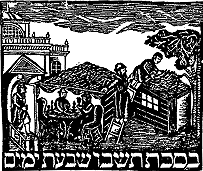
|
From these verses it can be seen that we are commanded concerning (a) taking certain species of plants and (b) living in temporary huts.
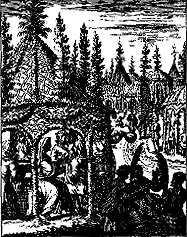
|
Succot is one of the three Pilgrimage Festivals,  Shalosh Regalim and so is one of the major festivals. Three times in a year shall all your males appear before the Lord your God in the place which He shall choose; in the Feast of Unleavened Bread, and in the Feast of Weeks, and in the Feast of Booths; and they shall not appear before the Lord empty; Every man shall give as he is able, according to the blessing of the Lord your God which he has given you. 6. The phrase In the place where He shall choose refers to the Temple in Jerusalem. Deuteronomy, which was written some six centuries after the Exodus, is written as if it was set down at the end of Moses' lifetime, which was long before the Temple was built.
Shalosh Regalim and so is one of the major festivals. Three times in a year shall all your males appear before the Lord your God in the place which He shall choose; in the Feast of Unleavened Bread, and in the Feast of Weeks, and in the Feast of Booths; and they shall not appear before the Lord empty; Every man shall give as he is able, according to the blessing of the Lord your God which he has given you. 6. The phrase In the place where He shall choose refers to the Temple in Jerusalem. Deuteronomy, which was written some six centuries after the Exodus, is written as if it was set down at the end of Moses' lifetime, which was long before the Temple was built.
(5.) Lev 23, 39-43. (6.) Deuteronomy 16, 16-17.
NON-BIBLICAL ORIGIN.
The statement in Leviticus 23, 43 that we observe the festival to remember that our ancestors dwelt in booths when they came out of Egypt, is clearly a late explanation, as there are many references to the fact that the Israelites in the wilderness lived in tents,7. rather than in succot. It appears probable that we began to observe the festival some time after settling in Canaan, when the Israelites had begun to grow crops. Before that, the children of Israel were shepherds as their fathers were, as Joseph's brothers told Pharaoh.8. Later, they were slaves in Egypt and in the wilderness where they sowed no crops. We know that the Canaanites observed a harvest festival when they gathered in their grapes.9. Probably the Jews gave a Jewish religious significance to what was a secular celebration of the end of a year's work. (see also WHY HAVE A SUCCAH? and SUCCOT AND WATER.)
The Jewish celebration of the festival must have been influenced by Canaanite practices. The over-indulgence by celebrants in the new harvest's wine caused the Hebrew prophets to condemn such misbehaviour.10. It is probable that an autumn festival was observed well before the first Temple was built; but there is no evidence that they waved the four species or that succot were built until Ezra's time in the 5th century BCE. (See THE FOUR SPECIES and ORIGIN OF THE SUCCAH ) Until Ezra the emphasis was more on drinking wine than on religious worship. The story of Elkanah and Hannah going each year to worship at Shiloh11. was probably at Succot. This possibly helps to explain why Eli wrongly jumped to the conclusion that Hannah was drunk.
(7.) Deut. 5, 27; 16, 7; Numbers 16, 26, etc. (8.) Genesis 47, 3. (9.) Judges 9, 27. (10.) Hosea 9, 1 and Isaiah 28, 7-8. (11.) 1 Samuel ch. 1.
LENGTH OF FESTIVAL.
Succot begins on the 15th of Tishri, which is a full moon. In the Leviticus quotation there is a confusing reference to time. The festival is to be observed for seven days but it also refers to the eighth day being a holy day. So the eighth day was regarded as a special festival in its own right. It was called  SH'MINI ATSERET., the eighth day of gathering together. After Jews dispersed throughout the world, an extra day was added to festivals because of doubts about the exact dates, and this eighth day was observed as part of Succot. (see SECOND DAYS OF FESTIVALS.) Later still, the ninth day became the separate festival and was called
SH'MINI ATSERET., the eighth day of gathering together. After Jews dispersed throughout the world, an extra day was added to festivals because of doubts about the exact dates, and this eighth day was observed as part of Succot. (see SECOND DAYS OF FESTIVALS.) Later still, the ninth day became the separate festival and was called  SIMCHAT TORAH., Rejoicing of the Law. Jews in Israel together with Liberal and Reform Jews observe seven days Succot and the eighth as Simchat Torah, referring to it both as Sh'mini Atseret and as Simchat Torah. For them, the first, seventh and eighth days are regarded a Yontuf (Yom Tov), a major festival when no work should be done. For those observing the extra days, the first, second, seventh, eighth and ninth are all regarded as Yontufs. The seventh day is usually called
SIMCHAT TORAH., Rejoicing of the Law. Jews in Israel together with Liberal and Reform Jews observe seven days Succot and the eighth as Simchat Torah, referring to it both as Sh'mini Atseret and as Simchat Torah. For them, the first, seventh and eighth days are regarded a Yontuf (Yom Tov), a major festival when no work should be done. For those observing the extra days, the first, second, seventh, eighth and ninth are all regarded as Yontufs. The seventh day is usually called  HOSHANAH RABBAH. (The Great Hosannah).
HOSHANAH RABBAH. (The Great Hosannah).
THE FOUR SPECIES.
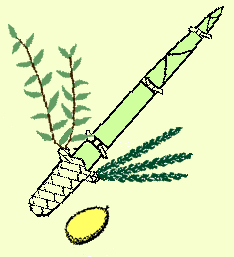
Two of the  Arba'ah Minim the four species are clearly identified in the Leviticus quotation. These are
Arba'ah Minim the four species are clearly identified in the Leviticus quotation. These are  Lulav, Palm and
Lulav, Palm and  Aravot, Willow. The other two are identified by Rabbinic interpretation as
Aravot, Willow. The other two are identified by Rabbinic interpretation as  Hadasim, Myrtle and the
Hadasim, Myrtle and the  Etrog. The Etrog is the fruit of a citrus tree which in appearance is similar to a large lemon but differs in having a sweet aromatic smell. In the phrase the fruit of goodly trees the word goodly is in the original Hebrew hadar which means pleasant, but can also be taken to mean something which dwells. So it was interpreted as fruit which stays on trees a long while.12. An Etrog tree may have buds, blossom and fully ripened fruit on the tree at the same time, and so seemed to qualify as a long fruiting tree. The Myrtle was identified as the boughs of thick trees or rather as the thick boughs of trees. If one looks at a myrtle branch, the leaves of the plant grow clustered around the stem so that the branches appear to be thick. The custom is to have one palm branch, one etrog, two willow branches (because it is mentioned in the plural) and three myrtle branches (because the Hebrew word seemed to imply plaiting, and three strands are the minimum for this. Myrtle leaves also have the appearance being plaited like some Havdallah candles.)13.
Etrog. The Etrog is the fruit of a citrus tree which in appearance is similar to a large lemon but differs in having a sweet aromatic smell. In the phrase the fruit of goodly trees the word goodly is in the original Hebrew hadar which means pleasant, but can also be taken to mean something which dwells. So it was interpreted as fruit which stays on trees a long while.12. An Etrog tree may have buds, blossom and fully ripened fruit on the tree at the same time, and so seemed to qualify as a long fruiting tree. The Myrtle was identified as the boughs of thick trees or rather as the thick boughs of trees. If one looks at a myrtle branch, the leaves of the plant grow clustered around the stem so that the branches appear to be thick. The custom is to have one palm branch, one etrog, two willow branches (because it is mentioned in the plural) and three myrtle branches (because the Hebrew word seemed to imply plaiting, and three strands are the minimum for this. Myrtle leaves also have the appearance being plaited like some Havdallah candles.)13.

|
wine amphora on Jewish Tombstone. Rome, c. 1stCent. CE. |
The text says we should use them to rejoice before the Lord but gives no details as to how this is done. The present custom is to put the four species together and to wave them during parts of the service. (See SHAKING THE LULAV.) There is, however, evidence that indicated that they were used for building and decorating the Sukkah. Ezra told the people: Go out to the mountains and bring leafy branches of olive trees, pine trees, myrtles, palms and other leafy trees to make booths, as it is written.14. It seems significant that of all the possible type of trees, two of the three branches mentioned in Leviticus are also named by Ezra. (See also NAMES OF THE FESTIVAL. and SUCCOT AND WATER.
The custom of individuals taking the four species was clearly practised at the end of the second century BCE. About 100 BCE when the Saducean King Alexander Jannaeus deliberately poured water on the ground rather than pour it on the altar according to Pharisaic custom during Succot, all the people pelted him with etrogim.15. This shows that they must have been holding them at the time. In the late second Century BCE the practice is mentioned in the Apocrypha.16. The 1st century CE tombstone from the Jewish catacombs in Rome, is one of many that use the palm and the etrog as Jewish symbols. (What might be mistaken for a fishbone is intended to be a palm branch and the etrog is next to it.)
(12.) Leviticus Rabba 30, 8. (13.) Leviticus Rabba 30, 8. (14.) Nehemiah 8, 15. (15.) Josephus, Antiquities, 13, 13,#5 and Sukkot 4, 9. (16.) II Maccabees 10, 7.

|
the Lulav. |
MEANING OF THE 4 SPECIES
The picturesque nature of the waving of the  arba'ah minim, the four species has led to many homiletic interpretations:
arba'ah minim, the four species has led to many homiletic interpretations:
- The Etrog with both taste and smell = people with learning and good deeds. Palm produces dates with taste and little smell = those with learning but with no good deeds. The Myrtle has smell but no taste = those who do good deeds but are not learned. The Willow with neither taste or smell is like those Jews without learning or good deeds. Yet all types of Jews join together like the four species to praise God at Succot.17.
- The Etrog represents Abraham, Palm = Isaac, Myrtle = Jacob and willow = Joseph. 18.
- Etrog = Sarah, Palm = Rebekah, Myrtle = Leah and Willow = Rachel 18.
- The Etrog is shaped like the heart, the Palm like the spine, the myrtle leaf like the eye and the willow leaf like the mouth. Which teaches us to worship and serve God with all our bodily parts and with all our might.
- For an historical reason for the custom see SUCCOT AND WATER.
(17.) Leviticus Rabba 30, 12 . (18.) Leviticus Rabba 30, 10. For the biblical verses on which these interpretations are based.
 |
Italy, 1492. |
SHAKING THE LULAV (With Demo)
The Arba'ah Minim, the four species of plants are usually arranged in a special way. The palm, the myrtle and the willow branches are usually held together in a specially prepared holder plaited from palm leaves. During the service they are held together with the etrog and waved while certain parts of the  Hallel are sung or said. (The Hallel is the name given to psalms 113 to 118) The four species are waved three times in each of the six directions - East, South, West, North, upwards and downwards. We do this to signify that God is all around us, an idea which we feel especially at this harvest festival. (See also SUCCOT AND WATER.
Hallel are sung or said. (The Hallel is the name given to psalms 113 to 118) The four species are waved three times in each of the six directions - East, South, West, North, upwards and downwards. We do this to signify that God is all around us, an idea which we feel especially at this harvest festival. (See also SUCCOT AND WATER.
 | LULAV SHAKING DEMO. |

THE SUCCAH
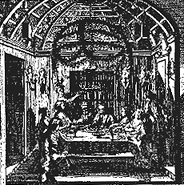
|
Germany, 1748. |
The command You shall dwell in booths seven days19. was taken to mean that one was required to eat and sleep in the Succah.20. It became the custom for families to build their own Succah and eat their meals there and also sleep there at night. This was a practical idea for Jews living in a Mediterranean climate, but it could prove a real hardship for those in more northern areas. It has become a custom for Synagogues to build communal Succot and to celebrate Kiddush there. But it is still a fun event for families to build their own Succah and eat there when weather permits and it makes the festival memorable and meaningful to all the family. The Tannaitic Rabbis were also faced with the problem of bad weather in Succot, they were asked: If rain fell, when may one be permitted to leave the succah ? Their answer was: When the porridge (or soup) would become spoilt.21.
Some essential things about a Succah are that it should be a temporary structure and that the roof should not be completely covered over so that one can see through to the sky. There are detailed and complex regulations about Sukkah building. (see two examples in SUCCOT CURIOSITIES.)
(19.) Leviticus 23, 42. (20.) Sukkah 2, 1 and 2, 6. (21.) Sukkah 2, 9.
ORIGIN OF THE SUCCAH
The first occasion when we know for certain that Succot were built was on return from the Babylonian exile22. It is stated that from the days of Joshua the son of Nun to that day the people had not done so.23. It is also stated that Ezra commanded them to carry out the practise because it was written in the scroll which he had brought with him from Babylon. This would seem to imply that the custom was commanded in the later priestly source of the laws and that it had not been included in the earlier law codes, which they had possessed before the exile.
(22.) Nehemiah 8, 14-17. (23.) Nehemiah 8, 17.
WHY HAVE A SUCCAH?
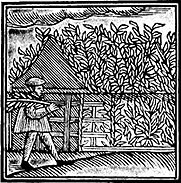
|
Holland, 1695. |
Various reasons have been suggested as to why we have to live in a Succah:
- Because it is commanded in the Torah.24.
- To remind us that God made our ancestors to live in succot in the wilderness when they came out of Egypt.25.
- Succot were built to accommodate the many pilgrims who went to Jerusalem to celebrate Succot.26. These succot became such an established custom that they were thought to be one of the requirements of the festival.
- The succot were originally temporary huts which were built in the fields 27. to provide shade during the mid-day heat for workers or their produce. Such shelters can still be seen in Israel to this day. Originally, the harvest celebrations naturally centred round these harvest huts, as they did amongst other people in other parts of the world.
- The temporary nature of the succah was to remind us of the limited span of our lives.28.
- The uncompleted roof and the fruit and vegetable decoration remind us of nature and God's bounties. It should remind us of the good and bad things of life, of our duty to give thanks to God and to learn humility.29. (By taking us out of our strong safe homes it reminds us of our human powerlessness and insignificance in the vast and wonderful universe.)
These six reasons are not necessarily contradictory. It is quite possible that the custom was based upon the natural observance of a harvest festival around the harvest huts in Canaan, which was then given a Jewish significance by linking it to the Exodus. Later the temporary accommodation in Jerusalem was incorporated and still later the reasons of Philo and Maimonides were added as homiletic or philosophical explanations.
(24.) Leviticus 23, 42. (25.) Leviticus 23, 43. (26.) Hosea 12, 10. (27.) Isaiah 1, 8. (28.) Philo. (29.) Maimonides: Guide to The Perplexed, part 3, #43.
SUCCOT AND WATER
Succot was primarily a harvest festival when we give thanks for the past harvest and prayed for the success of the coming one. As the success of the harvest in Palestine depended so much on the annual rainfall, it is not surprising to find the theme of rain running through the practices connected with the festival. This theme appears in the following customs:
- In temple times one of the most important ceremonies was the pouring of water onto the altar each of the seven days of the festival.30. It was thought that the size of the coming year's rainfall depended on it's correct observance. Hence the anger of the people when Alexander Jannaeus deliberately failed to observe it properly. (see under THE FOUR SPECIES.) The Talmud records that he who has not seen the ceremony of water pouring in the Temple has not seen real rejoicing.31.
- Tefilat Geshem, a prayer for rain is said before the open Ark in Orthodox Synagogues during musaf (Additional Service) on Shemini Atseret.32.
- The mention of rain
 (mashiv haru'ach umorid hageshem) is introduced into the second blessing of the Amidah after Shemini Atseret.
(mashiv haru'ach umorid hageshem) is introduced into the second blessing of the Amidah after Shemini Atseret.
- The willow is a tree especially associated with water; but all four species have been linked to water.33.
- The shaking of the Lulav makes a sound like the falling of rain. It is waved while we say or sing the words For His lovingkindnes is everlasting34. and also for Save us now O Lord, Cause us to prosper now O Lord!35. The meaning being save us with a good rainfall so that our harvest will be abundant and so that we will prosper. Perhaps the custom was introduced to make the sound to remind God to give us rain. It may even be a Jewish adaptation of an existing rural custom.
Although this last explanation probably describes the origin of the custom of shaking the lulav, the homiletic explanations given in MEANING OF THE 4 SPECIES. show just how successful later generations of Jews have been in adapting a folk custom, and making it a thoroughly Jewish practice which expresses Jewish values.
(30.) Sukkah, 4, 9. (31.) Sukkah 5, 1. (32.) Art Scroll Siddur p.704-8. (33.) R. Eliezer of Worms: Rokeach. (34.) Psalm 118 verses 1 - 4. (35.) Psalm 118, 25.

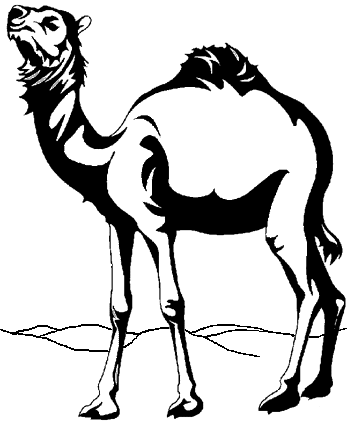
SUCCOT CURIOSITIES.
The Mishnah states: If one erects his Succah on the top of a wagon, or on the deck of a ship, it is valid and they may go up into it on the festival. If he made it on the top of a tree, or on the back of a camel, it is valid, but they may not go up into it on the festival.36.
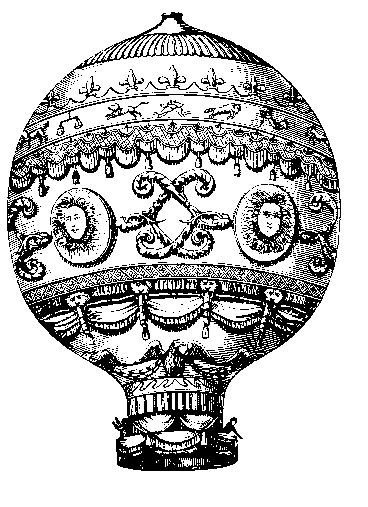
In 1910 Rabbi Shalom Mordecai Schwadron gave a learned responsum to the question: If a balloon hovers over a Succah, does that mean that the succah is regarded as covered and not open to the sky and therefore is not a valid succah? His answer can be summarised as saying that providing the balloon is moveable the succah is valid.37.
(36.) Sukkah 2, 3 (37.) For a more detailed answer see S.B.Freehof: The Responsa Literature, pp. 249ff.
USHPIZIN - GUESTS.
It is a tradition that one welcomes guests into one's succah. In the sixteenth century Isaac Luria introduced the innovation of symbolically welcoming seven imagined guests into one's succah, one for each day. The guests he recommended were Abraham, Isaac, Jacob, Joseph, Moses, Aaron and David. He based this on a saying in the13th century mystical work called the Zohar.38.
(38.) Emor 103-104.
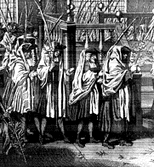
|
1724. Note willow leaves on floor. |
HOSHANAH RABBAH.
The seventh day of Succot is known as  Hoshanah Rabbah, The Great Hosannah and also as Yom Aravah, the Day of the Willow. During Succot the Four Species are carried round the Synagogue in procession behind the Torah Scrolls and Hoshanot are said.39. (Hoshanot are poems containing Psalm 118, 25.) On Hoshanah Rabbah the procession goes round seven times and more hoshanahs are said, and that gave rise to the name The Great Hossannah. The name appeared first after the Talmud was completed.40.
Hoshanah Rabbah, The Great Hosannah and also as Yom Aravah, the Day of the Willow. During Succot the Four Species are carried round the Synagogue in procession behind the Torah Scrolls and Hoshanot are said.39. (Hoshanot are poems containing Psalm 118, 25.) On Hoshanah Rabbah the procession goes round seven times and more hoshanahs are said, and that gave rise to the name The Great Hossannah. The name appeared first after the Talmud was completed.40.
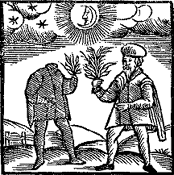
|
Germany, 1663. |
During the service palm branches are beaten on the floor until the leaves come off. Some say that this is to remind us of death and of the old belief in resurrection after death. It is more probable, however, that it is linked to the fact that the willow is one of the first trees to drop it's leaves in autumn, and so it reminds us of what is happening in nature at this season. Many congregations regard Hoshanah Rabbah as similar to Yom Kippur. Midrashim saying that God's judgement is sealed not on Yom Kippur but on Hoshanah Rabbah. That is probably why it was suggested that the beating of the willows was connected with death. So sometimes the reader wears a kittel and the Ark and the scrolls are dressed in white. Some of the prayers from Yom Kippur are introduced into the service. It was also a time of superstitions fears. One of these was that if a person saw their shadow without a head then that was a sign that they would die in the coming year. (see illustration.)
(39.) Sukkah 4, 5. And Sukkah 43b. (40.) Leviticus Rabba 37, 2.
SH'MINI ATSERET.
 Sh'mini Atseret, the eighth day of gathering together and Simchat Torah are put into a different category from Succot and yet they are linked to the festival. For it says: You shall dwell in booths for seven days.41. and also and on the eighth day shall be a solemn rest42. We are therefore only required to eat in the Succah for seven days, and as the eighth day is a separate festival, on the eve of Sh'mini Atseret when we make Kiddush, we say the Shehechiyanu (the blessing for reaching a special occasion).
Sh'mini Atseret, the eighth day of gathering together and Simchat Torah are put into a different category from Succot and yet they are linked to the festival. For it says: You shall dwell in booths for seven days.41. and also and on the eighth day shall be a solemn rest42. We are therefore only required to eat in the Succah for seven days, and as the eighth day is a separate festival, on the eve of Sh'mini Atseret when we make Kiddush, we say the Shehechiyanu (the blessing for reaching a special occasion).
However, this makes a problem for Orthodox Jews who live outside of Israel. Because they observe extra days of festivals, on the eighth day they are required to go into a succah. Yet in their prayers they refer to it as a separate special day when Succot laws do not apply. Therefore they compromise and go into the succah on the eighth day; but they do not say the usual required blessing of Leyshev ba-succah for fulfilling the mitsvah of entering a succah, as they do on the other days.43.
A prayer for rain is said on Sh'mini Atseret. Some think that this ought to be said from the beginning of Succot just as the prayers for dew begin on first day Passover. However, this is not done lest there should be a prompt answer to the prayer, for this would then prevent people from observing the mitsvot of eating and sleeping in the succah.
(41.) Leviticus 23, 43. (42.) Leviticus 23, 39. (43.) Ganzfried: Kitsur Shulchan Aruch book 3, 138, #4.
SIMCHAT TORAH.
 Simchat Torah, Rejoicing of the Law is the most recent of the festival days. Whereas we have been celebrating Succot for over 2,400 years, we have been observing Simchat Torah for less than 1000 years. Probably the earliest use of the name was by Hai Gaon in the 11thcentury. The Talmud does not mention it by name in speaking of scroll readings it says: On the next day (after the last day of Succot) we read, �And this is the blessing,44. The passage 'And this is the blessing' is from the end of Deuteronomy. So already at that time Babylonian Jews ended the cycle of scroll readings on that day, while the Palestinian Jews were using a three year cycle. The current practice of reading the opening chapters of Genesis as well, did not start until some time after the eleventh century. The reason that we read from Genesis immediately after Deuteronomy is to show that our duty to read and study the Torah never ceases, in doing so, we find that each time we do so we get new insights and discover new meanings in it. Early commentators said that we do so to prevent Satan saying that the Jews are happy to have finished reading it and were not really keen to restart it's study.45.
Simchat Torah, Rejoicing of the Law is the most recent of the festival days. Whereas we have been celebrating Succot for over 2,400 years, we have been observing Simchat Torah for less than 1000 years. Probably the earliest use of the name was by Hai Gaon in the 11thcentury. The Talmud does not mention it by name in speaking of scroll readings it says: On the next day (after the last day of Succot) we read, �And this is the blessing,44. The passage 'And this is the blessing' is from the end of Deuteronomy. So already at that time Babylonian Jews ended the cycle of scroll readings on that day, while the Palestinian Jews were using a three year cycle. The current practice of reading the opening chapters of Genesis as well, did not start until some time after the eleventh century. The reason that we read from Genesis immediately after Deuteronomy is to show that our duty to read and study the Torah never ceases, in doing so, we find that each time we do so we get new insights and discover new meanings in it. Early commentators said that we do so to prevent Satan saying that the Jews are happy to have finished reading it and were not really keen to restart it's study.45.
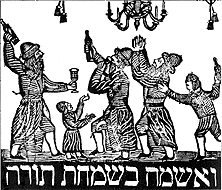
|
The observance of Simchat Torah is particularly happy and is usually very child-centred. It's features include a parade of all the scrolls round the synagogue seven times instead of the usual once. The children are encouraged to join in the procession and they usually have special flags to carry and wave. In times past it was the custom to fix an apple on top of each flag pole, and nobody minded if there was only the apple core left at the end of the service.
It is considered a special honour to be called up to the scrolls on the festival. Those called up are called Chatan/Kallat Torah and Chatan/Kallat B'reshit meaning the Bridegroom/Bride of the Torah and of Genesis, as if they were wedded to the Torah. At one time these people were expected to provide the food for the lavish Kiddush which followed the service. Many congregations call all the children up to the scroll, and these stand with a Tallit held over their heads, while the Torah blessings are said. In this way we bring the children closer to Torah.
The feasting and the celebration at the end of the cycle of scroll readings is really a communal siyum. From the middle ages it was customary when students had finished studying a tractate of the Talmud that they held a siyum which was a mixture of prayers and a party.
When Reform and Liberal Judaism began in Britain, the early synagogues were rather inhibited in their celebration of Simchat Torah. The Reform, because they placed great emphasis on decorum and the Liberals, because they did not want to place too much emphasis on the Torah section of the Bible. But now that more than a century has passed and ideas have changed, it is not uncommon to find them dancing with the scrolls in the procession round the synagogue to the accompaniment of very lively music to dance to.
(44.) Megillah 31a. (45.) Tur, Orach Chayim 669.
| FOR ALPHABETICAL INDEX OF CUSTOMS |
 Succot is referred to in the Bible in four ways:
Succot is referred to in the Bible in four ways: Chag Ha-Asif, the Festival of Ingathering.1.
Chag Ha-Asif, the Festival of Ingathering.1.
 Chag Ha-Succot, the Festival of Booths.2.
Chag Ha-Succot, the Festival of Booths.2.
 He-Chag, the Festival.3.
He-Chag, the Festival.3.
 Chag Ha-Shem, The Festival of the Lord.4. (Ha-Shem means the name and stands for the four lettered name of God which appears in the Bible.)
Chag Ha-Shem, The Festival of the Lord.4. (Ha-Shem means the name and stands for the four lettered name of God which appears in the Bible.)